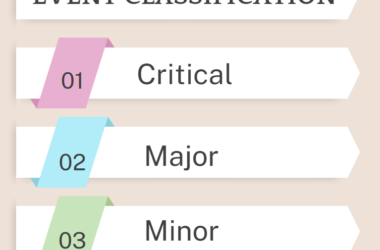- OBJECTIVE:
To lay down procedure for describe the steps to be followed for Batch Numbering system for all products.
- SCOPE :
This SOP is applicable for all the batches manufactured at {Company Name}., {Location}.
- RESPONSIBILITY:
Responsibility: Executive QA/Production Executive.
- ACCOUNTABILITY:
Manager QA shall be accountable for approval and implementation of SOP.
- PROCEDURE :
- BATCH NUMBERING SYSTEM FOR BATCHES:
- Batch Number:
- A distinctive combination of numbers and/or letters which uniquely identifies a batch on the labels, its batch records and corresponding certificates of analysis, etc.
- Batch no. /Lot No: Any distinctive combination of letters, numbers, or symbols, or any combination of them, from which the complete history of the manufacture, processing, packing, holding, and distribution of a batch or lot of product or other material can be determined.
- Production officer shall raise the requisition for batch records (BMR & BPR) as per the Requirement.
- QA shall receive the requisition & allot the batch no. for the product as per the batch numbering system as mentioned below;
- The batches manufactured by {Company Name} For commercial batches consist of 18 Alpha numeric digits as follows:
Click the link for download word file copy of this document: https://pharmaguidehub.com/product/batch-numbering-system-in-pharmaceutical-products/
- FOR SEMI FISHED PRODUCT BATCH NUMBERING SYSTEM
WWW/SF/XX/YYY/ZZZZ,
Where,
WWW stands for the initial of company name
SF Stand for the semi finish product
XX Initial of dosage form
(XX denote the dosages form: TA – Tablet, CA- Capsule, Li- Liquid, In- Injection, Vi- Vial etc.)
YYY Stand for the Serial No. of batch
ZZZZ Stands for current financial year (code in alphabet)
4th , 7th, 10th & 14th character is back slash
Ist semi finish Batch number for an organization their initial start with WWW dosage form is tablet financial year 2024
EX.- WWW/SF/TA/001/2024
- FOR FINISHED PRODUCT BATCH NUMBERING SYSTEM
WWW/FP/XX/YYY/ZZZZ,
WWW stands for the initial of company name
FP Stand for the finished product
XX Initial of dosage form
(XX denote the dosages form: TA – Tablet, CA- Capsule, Li- Liquid, In- Injection, Vi- Vial etc.)
YYY Stand for the Serial No. of batch
ZZZZ Stands for current financial year (code in alphabet)
4th , 7th, 10th & 14th character is back slash
Ist finish product Batch number for an organization their initial start with WWW dosage form is tablet financial year 2024
EX.- WWW/FP/TA/001/2024
- The batches manufactured by {Company Name} For Pilot batches consist of 19 Alpha numeric digits as follows:
- FOR SEMI FISHED PRODUCT BATCH NUMBERING SYSTEM FOR PILOT BATCHES:
WWW/SFP/XX/YYY/ZZZZ,
Where,
WWW stands for the initial of company name
SFP Stand for the semi finish product of pilot batches
XX Initial of dosage form
(XX denote the dosages form: TA – Tablet, CA- Capsule, Li- Liquid, In- Injection, Vi- Vial etc.)
YYY Stand for the Serial No. of batch
ZZZZ Stands for current financial year (code in alphabet)
4th , 7th, 10th & 14th character is back slash
Ist semi finish Batch number of pilot batches for an organization their initial start with WWW dosage form is tablet financial year 2024
EX.- WWW/SF/TA/001/2024
- FOR FINISHED PRODUCT BATCH NUMBERING SYSTEM FOR PILOT BATCHES:
WWW/FPP/XX/YYY/ZZZZ,
WWW stands for the initial of company name
FPP Stand for the finished product of Pilot batches
XX Initial of dosage form
(XX denote the dosages form: TA – Tablet, CA- Capsule, Li- Liquid, In- Injection, Vi- Vial etc.)
YYY Stand for theSerial No. of batch
ZZZZ Stands for current financial year (code in alphabet)
4th , 7th, 10th & 14th character is back slash
Ist finish product of pilot batches, Batch number for an organization their initial start with WWW dosage form is tablet financial year 2024
EX.- WWW/FPP/TA/001/2024
- As per Customer requirement batch No. should be changed according to customer requirement.
- REFERENCES:
Not Applicable
- ANNEXURES:
| ANNEXURE No. | TITLE OF ANNEXURE |
| Annexure-I | Batch number Allocating Register |
- DISTRIBUTION:
| Controlled Copy No.01 | : | Manager Quality Assurance |
| Controlled Copy No.02 | : | Manager Quality Control |
| Controlled Copy No.03 | : | Manager Production |
| Controlled Copy No.04 | : | Manager Engineering |
| Controlled Copy No.05 | : | Manager Warehouse |
| Master Copy | : | Quality Assurance Department |
- ABBREVIATIONS:
| SOP | : | Standard Operating Procedure |
| QA | : | Quality Assurance |
- REVISION HISTORY:
CHANGE HISTORY LOG
| Revision No. | Details of Changes | Reason for Change | Effective Date |
| 00 | New SOP | Not Applicable | To be recorded manual |
ANNEXURE-I
BATCH NUMBER ALLOCATING REGISTER
| S. No. | Product Name | Mfg. Date | Exp. Date | Batch No. | Checked By (Sign/Date) | Approved By (Sign/Date) |
Click the link for download word file copy of this document: https://pharmaguidehub.com/product/batch-numbering-system-in-pharmaceutical-products/
Frequently Asked Questions ?
1. What is a batch number?
Ans: A batch number is a unique identifier assigned to a specific quantity of drug substance or drug product manufactured in a single process or series of processes. It allows for traceability and tracking of the product throughout its lifecycle, from raw materials to final distribution.
2. Why is a batch numbering system important?
Ans: A robust batch numbering system is essential for several reasons:
- Quality assurance: It facilitates the identification and recall of specific batches in case of quality issues or adverse events.
- Traceability: It allows for tracking the history of a batch, including raw materials, manufacturing processes, and distribution channels.
- Compliance with regulations: Regulatory bodies like FDA and EMA require accurate batch tracking for Good Manufacturing Practices (GMP) compliance.
3. What are the key components of a batch number?
Ans: The format of a batch number can vary by company, but it typically includes:
- Unique identifier: This could be a combination of letters, numbers, or symbols that distinguishes the batch from others.
- Date code: This indicates the manufacturing date or year.
- Control number: This may be an internal reference number used for tracking within the manufacturing facility.
4. What are the different types of batches?
- Pilot batch: A small-scale production run used for testing and optimization before full-scale manufacturing.
- Validation batch: A batch manufactured to demonstrate the consistency and reliability of the manufacturing process.
- Production batch: A batch manufactured for commercial use.
- Stability batch: A batch used for long-term stability testing to determine the shelf life of the product.
5. How do you assign a batch number?
Ans: Companies have established procedures for assigning batch numbers, often involving a combination of sequential numbering, date codes, and internal control numbers. The system needs to be robust and validated to ensure uniqueness and prevent errors.
6. What are the challenges in maintaining a batch numbering system?
Ans:
- Data integrity: Ensuring accurate and consistent recording of batch information throughout the manufacturing and distribution chain.
- Human error: Mistakes in assigning or recording batch numbers can lead to serious traceability issues.
- System complexity: Managing and maintaining a complex batch numbering system with multiple products and processes can be challenging.
7. What are the best practices for maintaining a batch numbering system?
Ans:
- Documented procedures: Clearly defined and documented procedures for assigning, recording, and tracking batch numbers are crucial.
- Validation and verification: Regularly validate the system and verify its accuracy to ensure data integrity.
- Training: Train personnel involved in batch numbering and tracking on the importance and proper procedures.
8. How are batch numbers used in quality control?
Ans:
- Batch release testing: Each batch is tested against predetermined specifications before release for sale.
- Stability testing: Batch numbers help track specific batches for long-term stability studies.
- Investigations: In case of quality issues or adverse events, batch numbers are used to identify and track affected batches and take corrective action.
9. How are batch numbering systems changing with technology?
Ans:
- Electronic batch records (EBRs): Paper-based batch records are being replaced with electronic systems, improving data accuracy and traceability.
- Blockchain technology: Some companies are exploring the use of blockchain for secure and transparent batch tracking.
10. What are the future trends in batch numbering systems?
Ans:
- Increased focus on data integrity and traceability: Regulatory requirements for batch tracking are likely to become more stringent.
- Adoption of advanced technologies: EBRs and blockchain are expected to play a bigger role in future systems.
- Standardization of batch numbering formats: Industry-wide collaboration may lead to more standardized formats for improved compatibility and data sharing.
Click the link for download word file copy of this document: https://pharmaguidehub.com/product/batch-numbering-system-in-pharmaceutical-products/





